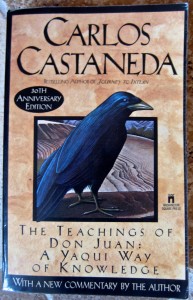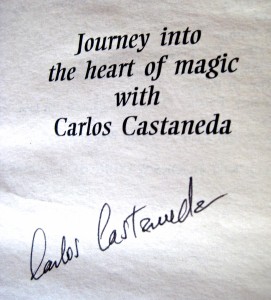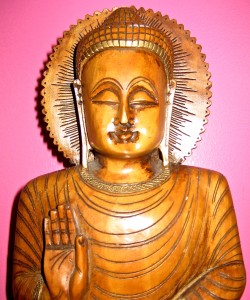
We humans are a lot to manage, a lot to really keep in mind. The possibilities that we might perceive, that we might interact with, that we might experience are quite extraordinary, and quite unpredictable.
It takes a tremendous effort to limit our perceptions; to reign in our possibilities; to create a uniform cohesive being, familiar and recognizable, constrained yet utterly bored. That constrained human being is funneled into the habits of greed and consumption with the fallback of self-pity for all that we are deprived of. However limiting this construction is, it’s the price we pay for our consensus reality. That reality is bursting at the seams with discontent now—bored to death with its limiting and limited purview—and it remains for doubt to hold us together, to uphold the old world of reason.
I pick up the shell of a bug and place it on a stone where it sits lifelessly. Later, I turn my awareness to it and, lo and behold, it gets up and walks away! For a moment I leave this world, this consensus reality of reason. I am in heightened awareness, where anything is possible, where the lifeless get up and walk away!
I stalk that reality, the bug indeed keeps on walking. I am sober. I am grounded. However, the guardian now swoops down and issues its edict: What I just saw is unreasonable, impossible, it could not happen. It did not happen. Obviously, there was a flaw in my perception.
Doubt moves solidly in and explains the misperception. Obviously, the “shell” I thought was an empty carapace was not empty at all. We must always be thorough in our investigations. Life must have been camouflaged or neatly curled up in that shell because new guts do not simply reappear in empty shells and walk away.
Carlos Castaneda recommended that we suspend judgment and allow ourselves to truly see. He also pointed out that we never fully lose our rational minds so we might want to consider giving them an appropriate outlet, say some form of study. Carlos and all of his cohorts were academics pursuing doctoral degrees, their rational minds intensely focused and busy, allowing their awareness to travel into other realms freed of the guardian of doubt.
Be careful when you drive. The rational mind is so preoccupied with upholding the laws of the road that heightened awareness can slip through the guardian’s grasp. People often have the most extraordinary experiences of expanded reality—entering other worlds—when driving. Not recommended! Keep your eyes on the road!

Recapitulation is another gateway to our true birthright of heightened awareness. In recapitulation, we often walk into the heightened awareness of alternate realities that we once fully lived but subsequently denied. In an effort to construct a cohesive self, the guardian of doubt censors much of our experiences, particularly experiences that break the rules of reason, of what one should expect in a familiar world.
Sometimes we are seized in recapitulation so completely by an experience that, for a moment, doubt can’t help but be suspended. And yet, but a moment later, doubt sweeps in to restore the order of a familiar self, a familiar world, a reasonable mind, effectively blocking out real experiences of the extraordinary. However, once we intend the path of self-knowledge, we open the door to the fuller experiences of all we are—beings far more capable than the limits of our reason.
Doubt, the guardian at the gate, the gargoyle of limitation must be confronted repeatedly. It warns us that if we go outside the gate it cannot protect us, thus we are challenged to find cohesion in the greater truth of our being.
That’s where we are now, in our time, as individuals and as a species, beings needing to pass by the guardians at the gate. We are charged with constructing a new consensus reality of affection for ourselves, each other, and the fuller truth of all that we really are.
Guardianless,
Chuck







